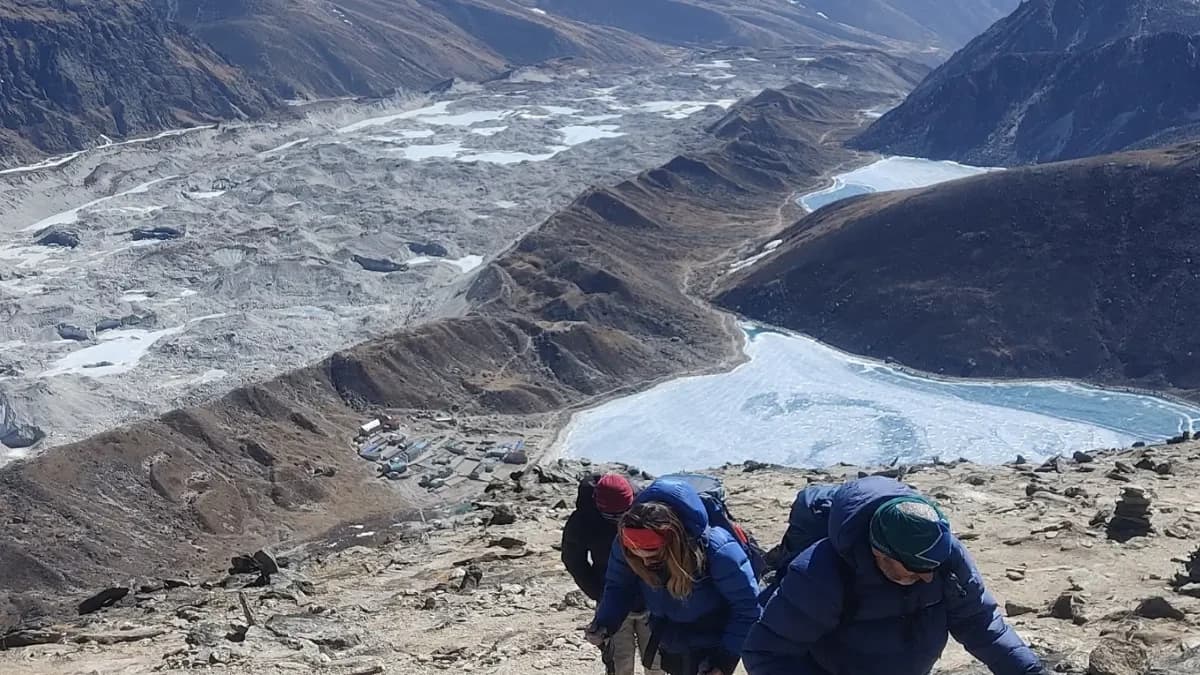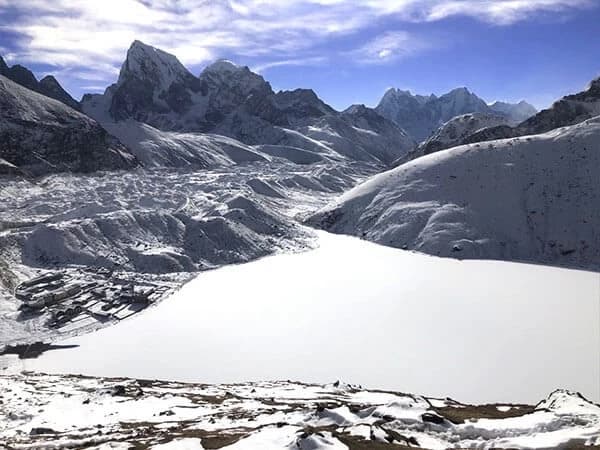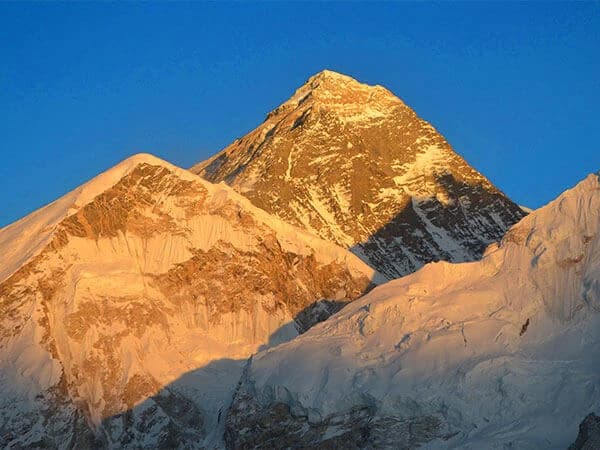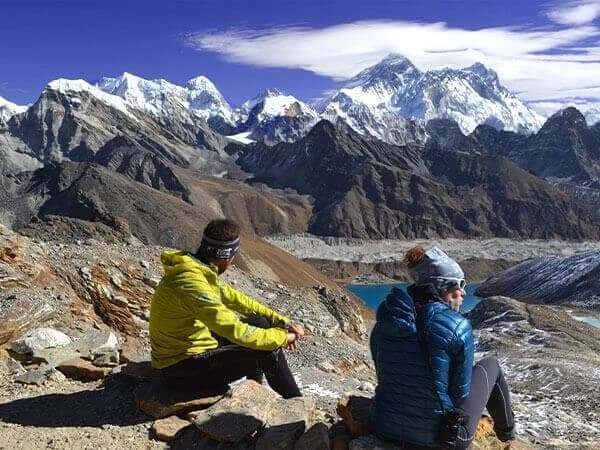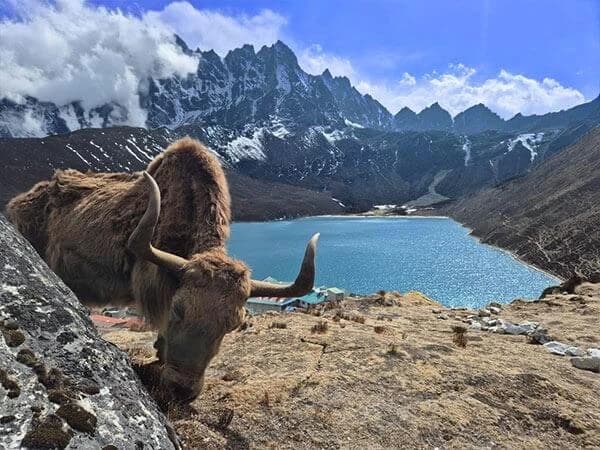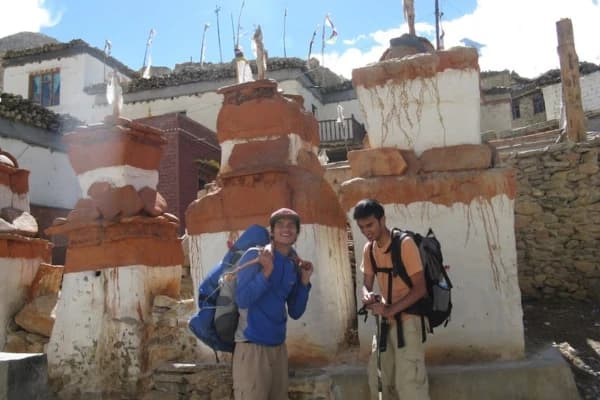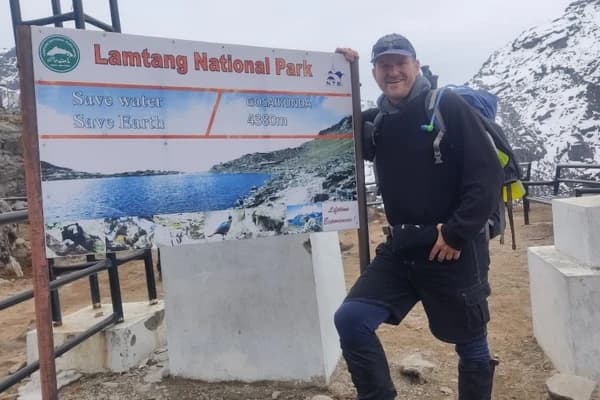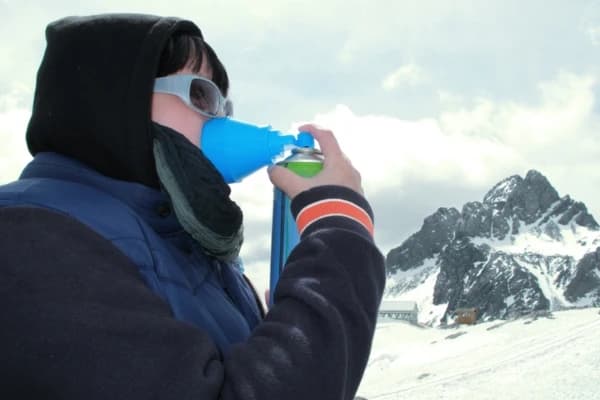If you’re wondering “How long does the Gokyo Lake Trek actually take?” here’s your quick answer:
The Gokyo Lake Trek takes about 12 to 14 days, depending on the exact route, how many rest days you take, and how you choose to return (trekking or helicopter). The round-trip distance from Lukla is roughly 92 to 110 kilometers.
That means you’ll be walking 5–7 hours a day through stunning valleys, past peaceful Sherpa villages, and eventually up to Gokyo Ri where the views of Everest and the turquoise lakes are simply unreal.
This guide covers everything you need to know, including how far you'll go, how many days to budget, the daily schedule, and travel recommendations. Now, let's get started!
Is the Gokyo Lake Trek right for you?
Book a FREE consultation with Nepal Gateway Trekking Team for expert guides and get personalized trek advice.
Gokyo Lake Trek Distance Overview
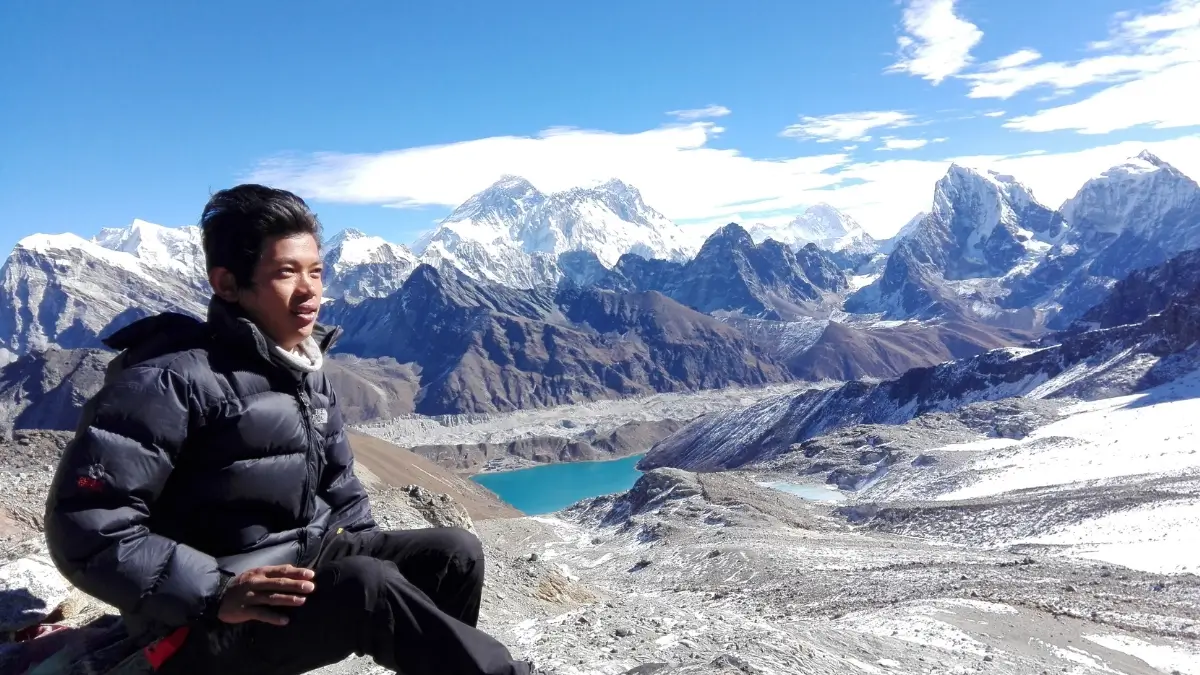
The Gokyo Lake Trek might be the best option if you are looking for a less crowded route other than the popular Everest Base Camp route.
With a little more silence to truly appreciate it, you'll still get those breathtaking Himalayan moments and that fantastic sense of accomplishment.
This walk provides something genuinely unique, whether of your preference for seclusion in the outdoors or avoiding the crowds at Everest Base Camp while still taking in the breathtaking mountain landscape. But before packing your bags, let's break down what this wonderful voyage involves.
Duration
Let's talk about time because this is probably one of your first questions. Most people allocate 12 to 14 days for the complete Gokyo Lake Trek experience, and that includes everything from your arrival in Kathmandu to getting back home with incredible memories (and probably way too many photos).
However, that can change based on:
- How many rest/acclimatization days do you include
- Whether you hike back to Lukla or take a helicopter
- If you plan to hike Gokyo Ri or visit Fifth Lake
- Weather delays (yes, Lukla flights love to surprise)
So while 14 days is a solid average, you can stretch or shorten the trek depending on your time, budget, and fitness level.
The weather in the Himalayas is unpredictable, and what looks like a clear morning can turn into a snowstorm by afternoon, potentially keeping you in a tea house for an extra day or two.
Your own goals also come into play; if you're feeling particularly strong, you might want to take on strenuous side hikes or take more time to enjoy the scenery not to mention your departure plan: taking a helicopter rather than walking back to Lukla can save you two to three days, but it will undoubtedly affect your spending plan.
Wondering when to go for Gokyo Lake trek? Explore our blog on best time to trek Gokyo Lake and start planning your Gokyo Lake trek.
Key Factors That Can Affect Your Trek Duration:
- Acclimatization days required - Your body's adaptation to altitude determines if you need extra rest days
- Side hikes and exploration - Optional climbs like Gokyo Ri or visits to Fifth Lake add 1-2 days each
- Weather and trail conditions - Storms, snow, or poor visibility can delay progress for safety reasons
- Mode of return - Helicopter flight saves 2-3 days compared to trekking back to Lukla
- Altitude-related issues - Slower pace due to AMS or emergency descent can significantly extend the trek
Distance
Do you want to know how much walking you're actually going to do? Let's put those numbers in perspective so you can see exactly what your legs are getting into. The Gokyo Lake Trek is between 92 to 110 kilometers round-trip, depending on the route variations you choose and whether you add those enticing side excursions.
Steep ascents, suspension bridges, rough mountain trails, and the kind of thin air that makes simply moving upward seem like an activity are all part of the adventure.
What This Distance Actually Means for Your Daily Experience:
- Daily walking time: 5 to 7 hours per day (including breaks and photo stops)
- Daily distance coverage: Roughly 8 to 14 kilometers each day
- Pace philosophy: It's not a race: success means soaking in the views, properly adjusting to altitude, and connecting with local culture
- Terrain reality: Mountain paths with elevation changes make every kilometer more challenging than flat ground
- Rest factor: Built-in breaks for meals, acclimatization, and simply enjoying where you are
Remember, the goal isn't to finish fastest, it's to arrive safely, enjoy every moment, and create memories that'll last way longer than any sore muscles.
Worried about the altitude or not sure you’re fit enough?
We’ll help you build a customized trip that suits your fitness level and comfort zone.
Elevation and Altitude
How high are we talking here? That's the major question that's probably making you a little anxious. You must start by taking altitude seriously because that is what distinguishes mountain trekking from a typical hiking trip. Your body needs time to adjust to the large vertical journey that the Gokyo Lake Trek requires. Imagine going from sea level to almost halfway up the cruising altitude of a commercial airplane, but over a period of days, you're doing it on foot.
Your Elevation Journey Breakdown:
- Starting point at Lukla: 2,840 meters (9,317 feet) - You'll already feel the thinner air stepping off that plane
- Peak elevation at Gokyo Ri: 5,360 meters (17,585 feet) - Higher than most mountains in Europe or North America
- Gradual ascent strategy: You'll climb steadily over multiple days, not all at once
- The 3,000-meter threshold: Most trekkers start noticing altitude effects around this point
- Rest days are mandatory: These aren't luxury days off—they're your safety net against altitude sickness
- Listen to your body: Headaches, nausea, or unusual fatigue are signals to slow down or descend
The golden rule of high-altitude trekking? "Climb high, sleep low" and never ignore what your body is telling you. That summit view is amazing, but getting there safely and getting home safely is what really matters.
Standard Gokyo Lake Trek Itinerary and Daily Hiking Details
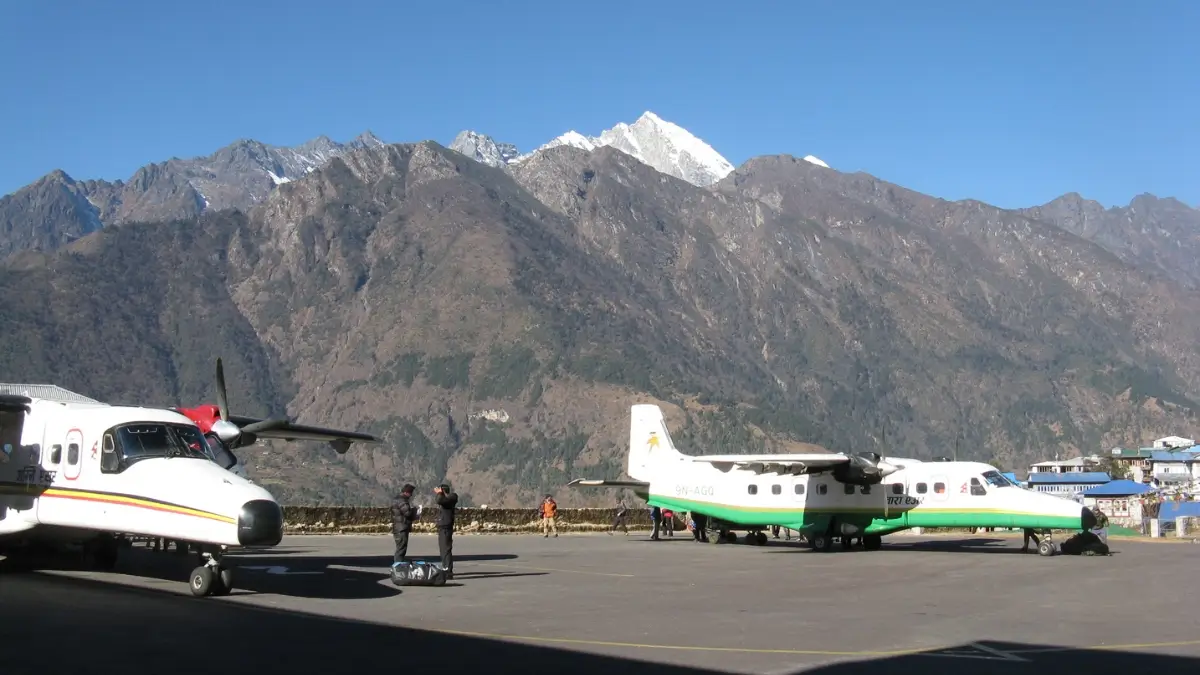
Consider this your general road map, but keep in mind that mountains have their own schedules, and in certain situations, adaptability is your best ally.
Others days are for acclimatization (yes, those "rest" days are critical to your safety), others are for covering ground and increasing altitude, and some are simply buffer days since, let's face it, Lukla flights don't always go as planned.
Here's how your Gokyo adventure will typically unfold:
| Day |
Plan |
|
Day 1 |
Arrive in Kathmandu |
|
Day 2 |
Fly to Lukla → Trek to Phakding (2,610m), Distance: 7.8 km |
|
Day 3 |
Phakding → Namche Bazaar (3,440m), Distance: 10.7 km |
|
Day 4 |
Acclimatization Day (hike to Everest View Hotel), Distance: 4 km |
|
Day 5 |
Namche → Dole (4,110m), Distance: 11.5km |
|
Day 6 |
Dole → Machhermo (4,470m), Distance: 5.5 km |
|
Day 7 |
Machhermo → Gokyo (4,790m), Distance: 7 km |
|
Day 8 |
Hike Gokyo Ri (5,360m), Distance: 3.6 km, or visit Fifth Lake, |
|
Day 9 |
Gokyo → Dole, Distance: 12.5 km |
|
Day 10 |
Dole → Namche, Distance: 11.7 km |
|
Day 11 |
Namche → Lukla, Distance: 18.5 km |
|
Day 12 |
Fly back to Kathmandu |
|
Day 13-14 |
Extra buffer days for flight delays or sightseeing |
Less on Time? Manage Your Time with These Tips
Before we get started on time-saving techniques, let's be clear: saving time does not mean abandoning safety. The mountains will not follow your strict itinerary, nor will altitude sickness. You simply need to be strategic about your priorities and what you're ready to sacrifice.
Smart Ways to Shorten Your Gokyo Trek:
- Take a helicopter from Gokyo or Namche: Save 2–3 days and get spectacular aerial views as a bonus
- Skip Fifth Lake or Gokyo Ri if you're low on time; focus on the main Gokyo Lakes experience
- Combining specific trekking days is advised only for very skilled and fit hikers.
Essential Time Management Tips:
- Always include one buffer day for bad weather or travel delays, especially for flights from Lukla.
- Start your day early to optimize daylight and prevent afternoon weather shifts.
- Follow basic acclimatization practices to prevent altitude sickness from delaying your timetable.
- Keep your backpack light with only essentials to maintain energy and a steady pace
- Know your daily distances and elevation gains so you can pace yourself appropriately
Remember, it's better to complete a shorter version safely than to rush through the full trek and miss the experience or end up with altitude problems.
If you are totally into trekking and exploring the beauty of Nepal, explore our featured trips that will give you the authentic Nepali cultural taste in the trek.
Have More Time? Combine These Treks with the Gokyo Lake Trek
If you've already decided to make the long travel to Nepal, combining treks is an excellent method to maximize your Himalayan vacation.
Why not take advantage of this gorgeous location now that you've paid for your flights, equipment, and permits?
Trek Combinations Worth Considering:
- Renjo La Pass addition: Gokyo renjo La Pass Trek adds a wonderful, less-crowded trail with breathtaking lake and mountain vistas.
- Everest Base Camp + Gokyo combo: Gokyo Lake with Everest Base Camp Trek is connected via the challenging Cho La Pass (recommended for experienced trekkers)
- High Passes Trek: The ultimate Everest region experience covering Kongma La, Cho La, and Renjo La passes
Depending on your pace and how many days you take off, these lengthy journeys usually last 16–20 days. Once you start organizing these combinations, it's difficult to stop daydreaming about spending a month in the mountains!
Book Your Gokyo Lake Trek with Nepal Gateway Trekking
The bulk of people become stranded with the plan. The logistics seem too complicated, yet you know you want to go on this journey. Flight reservations, permits, guides, lodging, weather delays, and suddenly your dream vacation feels like a full-time research project.
When you book your Gokyo Lake Trek with Nepal Gateway Trekking, here's what you get:
- Customize trips tailored to your specific schedule, fitness level, and interests
- All permits & logistics handled, you just show up ready to trek
- Friendly, experienced local guides who know every trail, teahouse, and weather pattern
- Carefully selected accommodations chosen for both comfort and those Instagram-worthy views
- 24/7 support before, during, and even after your trek for complete peace of mind
"Two weeks of your life for a view you'll never forget." That's the Gokyo Lake Trek in a sentence, and we're here to ensure those two weeks are perfect.
Ready to turn this plan into reality?
Whether you’re trekking solo, with friends, or with family, we’ll handle everything, so all you have to do is show up and hike. Contact Nepal Gateway Trekking Today to plan your trek.
FAQs
How much does the Gokyo Lake Trek typically cost?
The Gokyo Lake Trek typically costs between $1,000 and $1,500. The exact price depends on group size, season, return mode (flight or heli), and support crew.
Are there teahouses or lodges available along the Gokyo route?
Yes, there are teahouses or lodges available along the Gokyo route. Every stop has cozy teahouses with warm food and decent beds. The views are unreal.
Is the Gokyo Lake Trek suitable for beginners or families?
Definitely. As long as you go slow and acclimate well. Families with older kids often love the Gokyo route for its peaceful vibe.
What kind of food and water can I expect during the trek?
Teahouses serve Nepali, Tibetan, and simple Western food. Drink boiled or bottled water—or bring water-purifying tablets.
Do I need travel insurance for the Gokyo Lake Trek?
Yes. Always get travel insurance that covers high-altitude trekking and helicopter evacuation. It’s not optional here.
What should I do if I experience altitude sickness during the trek?
Your guide is trained to help. You’ll descend immediately, rest, and recover. Prevention (rest days, hydration, slow pace) is key.
